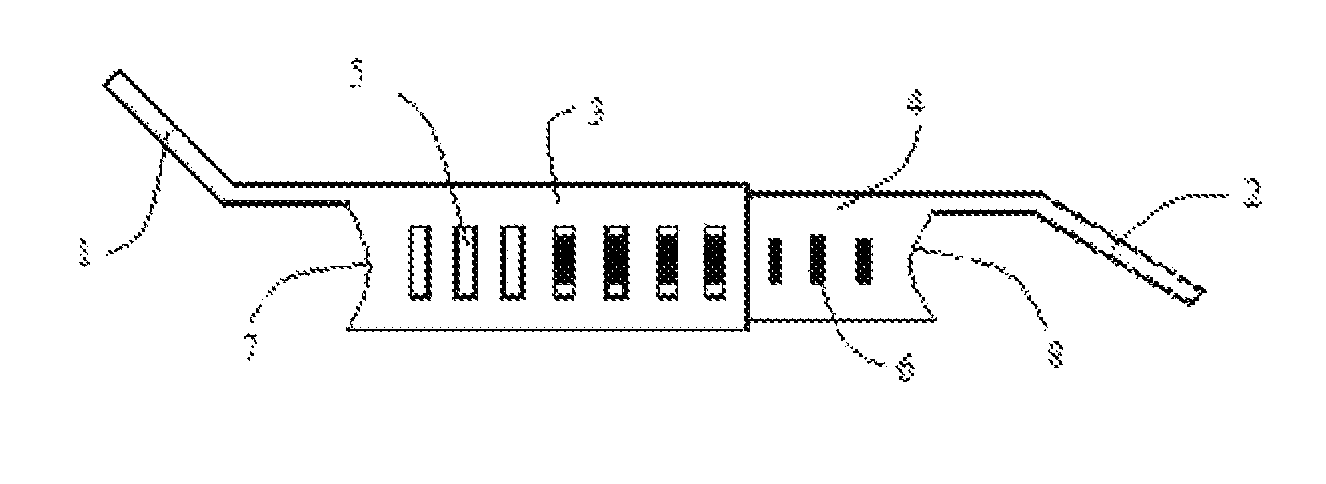Universal laminoplasty implant
a technology of universal laminoplasty and implant, applied in the field of universal laminoplasty implants, can solve the problems of increasing the time and complexity of the procedure, increasing the risk of pseudoarthrosis and accelerating degeneration at the levels, and reducing the surgical time. , the effect of simplifying laminar fixation and fusion
- Summary
- Abstract
- Description
- Claims
- Application Information
AI Technical Summary
Benefits of technology
Problems solved by technology
Method used
Image
Examples
Embodiment Construction
[0149]The present invention describes a device and method for fixation of lamina following a laminoplasty. The laminoplasty device as shown in FIGS. 1-5 comprises a spacer 3 with an extension 1 and a spacer 4 with an extension 2. The spacers 3 and 4 are telescopically engaged to each other with ridges or ratchet teeth 6 on the spacer 4 with the recesses 5 in the spacer 3. The spacers 3 and 4 are hollow with open ends 7 and 8 respectively. The spacer 3 and 4 walls are open at the top 15 and 16 and ends 7, 14 and 8, 13 respectively to allow packing of the hollow spacers after or before implantation with bone fusion material to fuse the lamina with the facet. Bone fusion material can comprise of autograft bone, allograft bone, xenograft bone, demineralized bone matrix, bone morphogenic protein, hydroxyapatite, and other bone fusion extenders. The solid floors 9 and 10 face the spinal canal and prevent the bone fusion material from migrating into the spinal canal. The extension 1 is ang...
PUM
 Login to View More
Login to View More Abstract
Description
Claims
Application Information
 Login to View More
Login to View More - R&D
- Intellectual Property
- Life Sciences
- Materials
- Tech Scout
- Unparalleled Data Quality
- Higher Quality Content
- 60% Fewer Hallucinations
Browse by: Latest US Patents, China's latest patents, Technical Efficacy Thesaurus, Application Domain, Technology Topic, Popular Technical Reports.
© 2025 PatSnap. All rights reserved.Legal|Privacy policy|Modern Slavery Act Transparency Statement|Sitemap|About US| Contact US: help@patsnap.com



